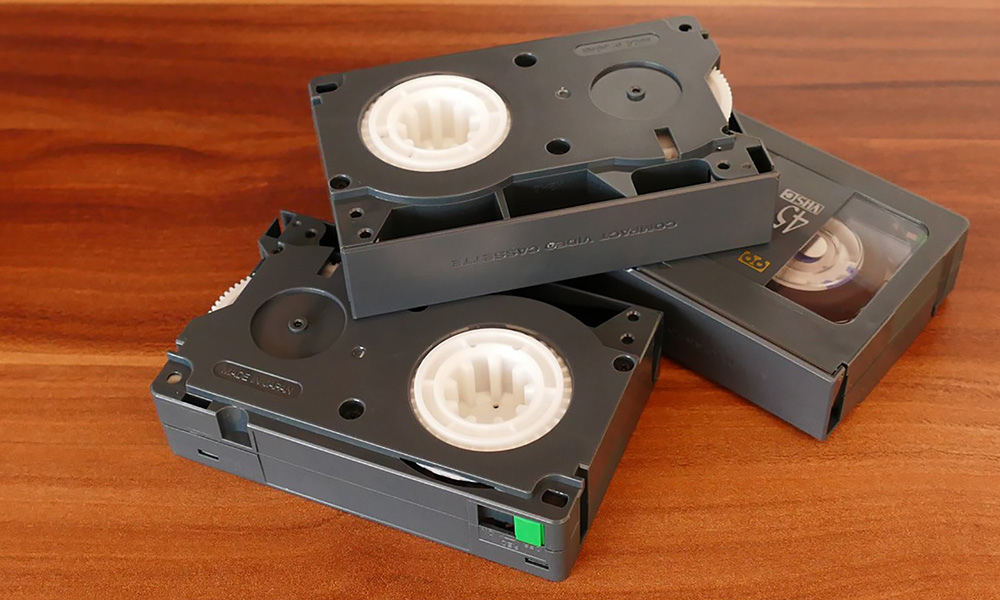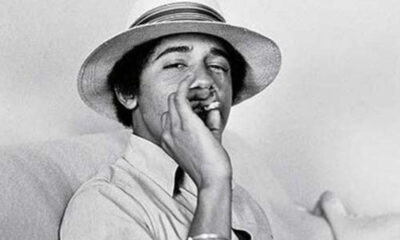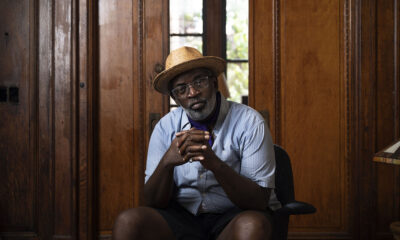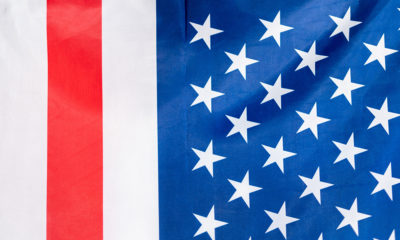
Cannabis
The Dope Tapes
A home archive of over 600 VHS tapes documenting marijuana media coverage is amassed by a collector and streamable online through Archive.org.
Michael Aldrich is an undeniably committed collector of drug history. Within the San Francisco home he shares his wife and fellow longtime cannabis activist Michelle Aldrich are the artifacts of a lifetime of collecting all sorts of objects, not the least among them pipes from around the world, early editions of America’s first cannabis focused piece of literature published in 1857 the “Hasheesh Eater” and Acapulco Gold rolling papers from the Amorphia cannabis cooperative the couple began in an effort legalize marijuana in California in 1972. Aldrich authored the first PHD dissertation on cannabis in the nation in 1970 and has collected news articles for more than 30 years, clipping the Chronicle every morning. “The Dope Tapes,” a series of videos available on Archive.org, represent years of documenting America’s depiction of drug-related news on VHS cassettes.
“When we got a VCR it was a natural step to start recording broadcast news too,” he says of the recordings which begin in January 1986, after the crash of the Challenger mission, and grew to include over 600 hand-numbered tapes dating through July 2008.
Watching The Dope Tapes is like entering the past through a jumble of movies, news and commercials hastily starting and stopping as they cut forward. Amassed within them are years of casual drug war documentation, Alridich simply hit record each time “dope” was depicted on TV. The tapes skip through new programs debating California’s Proposition 215 and music videos of Tom Petty belting out “Free Fallin.” Classic Dope #13, recorded in August 1995, includes a hemp fair in Golden Gate Park, Cab Calloway singing Minnie the Moocher — “She messed around with a bloke named Smokey. She loved him though was cokey. He took her down to Chinatown and he showed her how to kick the gong around.” — and clips from “Babylon 5.”
The sheer volume of the collection begs the question of the particular reason why Aldrich was amassing this particular type of archived material. And with it now digitized for the ages, what hope does he have for the VHS recordings now eternal future online?
“Future? Realizing the VCR video tapes are obsolete, I’ve been hoping to list at least some on the Internet Archive. They record them digitally, with my notes, and then it’s part of what William Gibson calls the digital memory of the planet,” he says. “I think they save the videotapes themselves in a warehouse somewhere. They’ve been digitizing whole libraries.”
The tapes, once stacked within the walls of the Aldrich’s apartment along with the remnants of one of the greatest drug paraphernalia collections ever gathered, The Fitz Hugh Ludlow Memorial Library that Aldrich curated from 1974 to 2004, now have a forever home online within a library of millions of documents that the non-profit organization Archive.org is building.
“Many early movies were recycled to recover the silver in the film. The Library of Alexandria — an ancient center of learning containing a copy of every book in the world — was eventually burned to the ground,” the organization explains on its website. “Even now, at the turn of the 21st century, no comprehensive archives of television or radio programs exist.”
Without cultural artifacts, the Internet Archive argues that civilization has, “no memory and no mechanism to learn from its successes and failures.”
The Dope Tapes can provide an essential reference point as the history of drugs in America continues to evolve. Luckily for the marijuana movement, Aldrich took the time to document a snapshot of the history involving the prohibition, and successes, of marijuana by staying diligent and pressing record.
TELL US, do you collect any cannabis-related memorabilia?






















